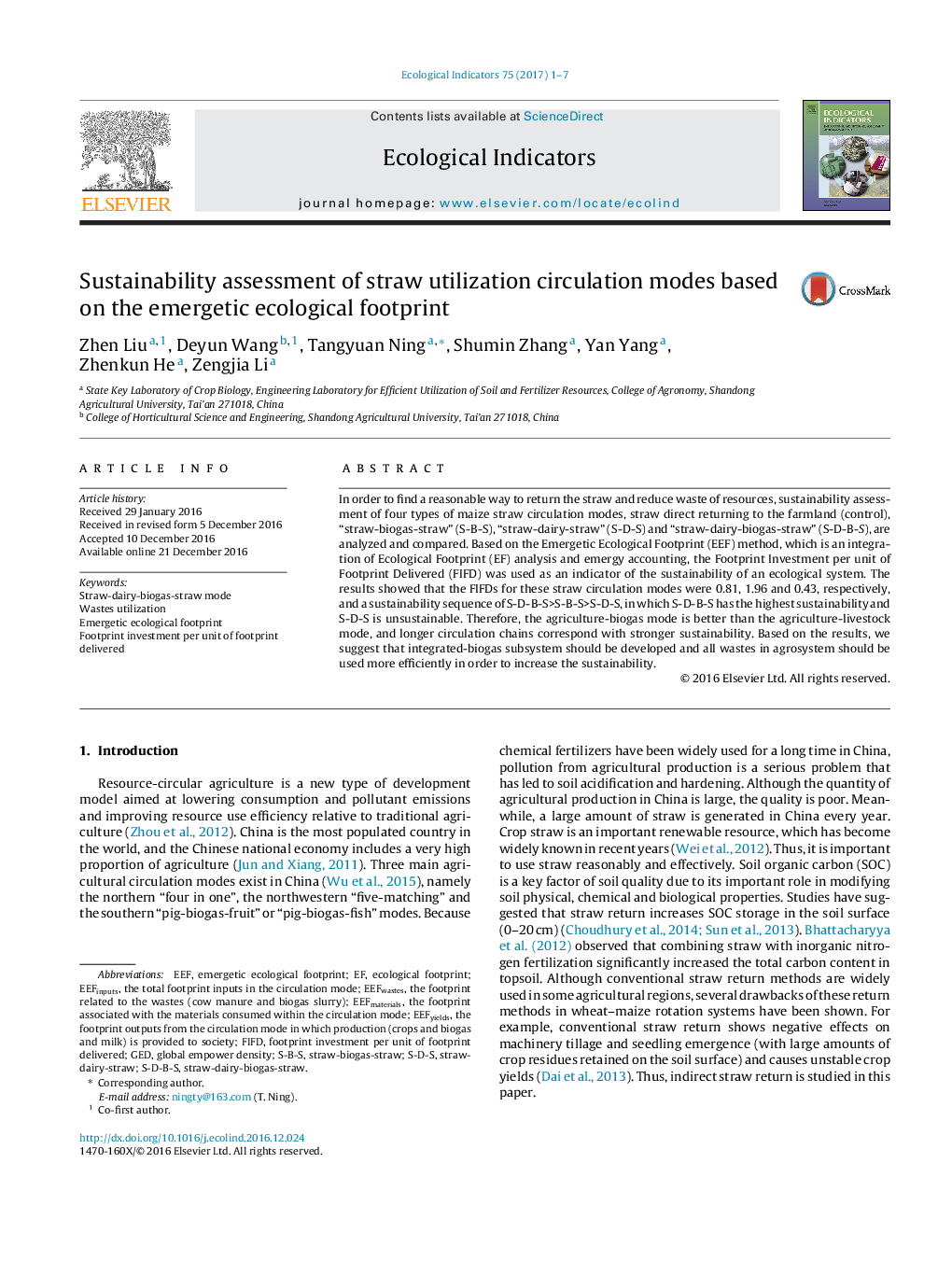| Article ID | Journal | Published Year | Pages | File Type |
|---|---|---|---|---|
| 5741790 | Ecological Indicators | 2017 | 7 Pages |
â¢Resource-circular agriculture is better for agricultural sustainable development.â¢Agriculture residues should be multi-level and fully utilized.â¢The “straw-dairy-biogas-straw” circulation mode has the highest sustainability.â¢More policies should be established to lengthen the circulation chain.
In order to find a reasonable way to return the straw and reduce waste of resources, sustainability assessment of four types of maize straw circulation modes, straw direct returning to the farmland (control), “straw-biogas-straw” (S-B-S), “straw-dairy-straw” (S-D-S) and “straw-dairy-biogas-straw” (S-D-B-S), are analyzed and compared. Based on the Emergetic Ecological Footprint (EEF) method, which is an integration of Ecological Footprint (EF) analysis and emergy accounting, the Footprint Investment per unit of Footprint Delivered (FIFD) was used as an indicator of the sustainability of an ecological system. The results showed that the FIFDs for these straw circulation modes were 0.81, 1.96 and 0.43, respectively, and a sustainability sequence of S-D-B-S>S-B-S>S-D-S, in which S-D-B-S has the highest sustainability and S-D-S is unsustainable. Therefore, the agriculture-biogas mode is better than the agriculture-livestock mode, and longer circulation chains correspond with stronger sustainability. Based on the results, we suggest that integrated-biogas subsystem should be developed and all wastes in agrosystem should be used more efficiently in order to increase the sustainability.
